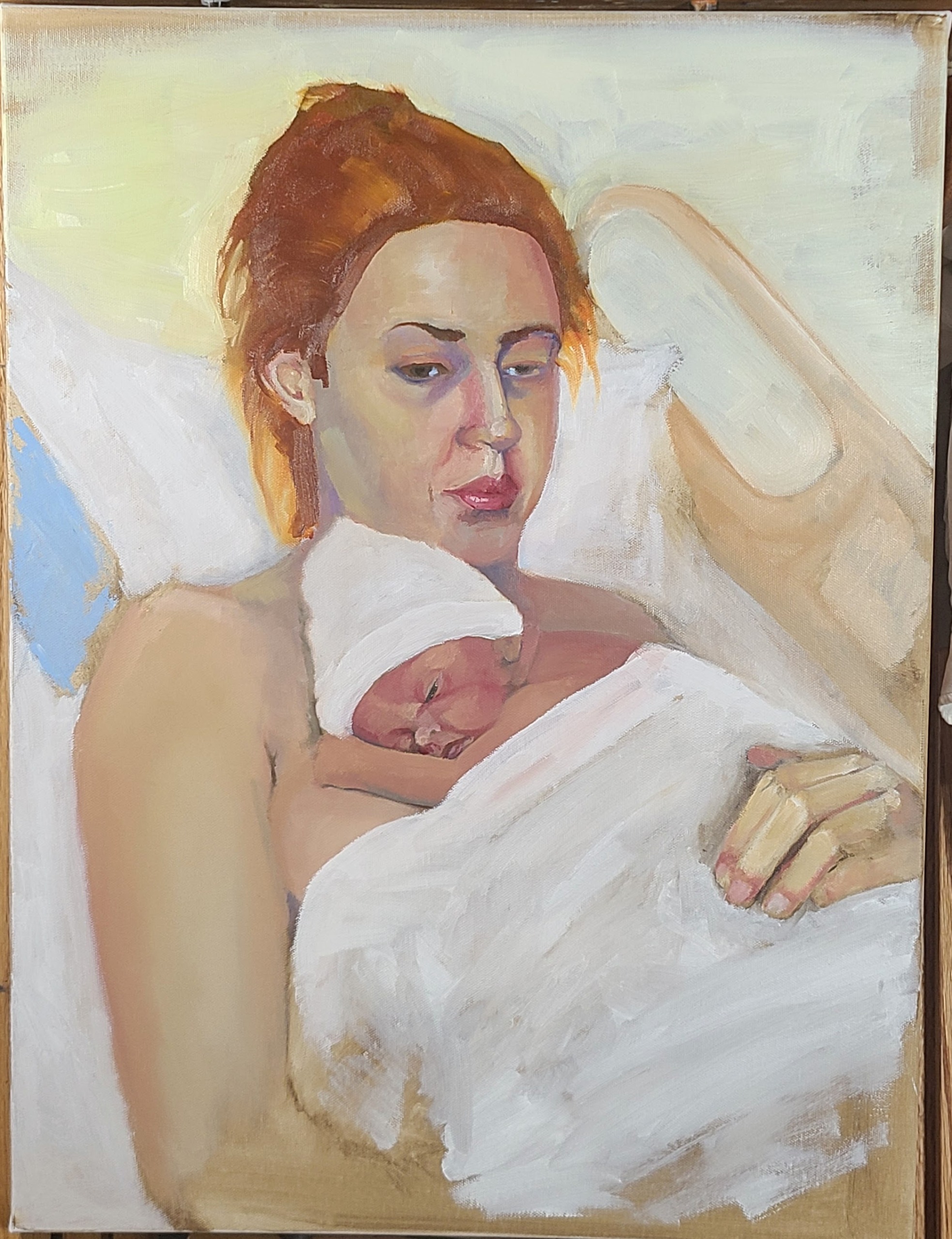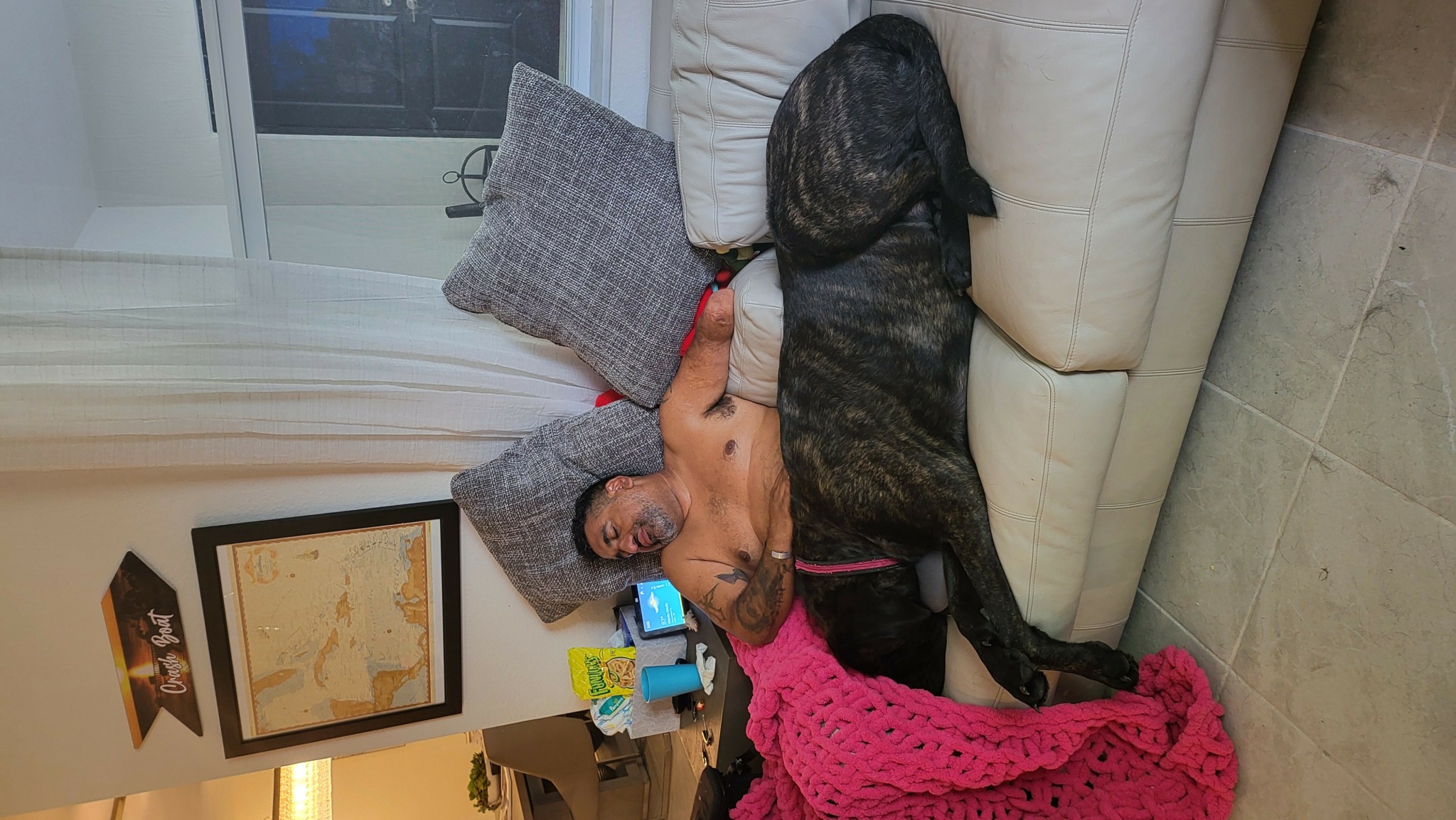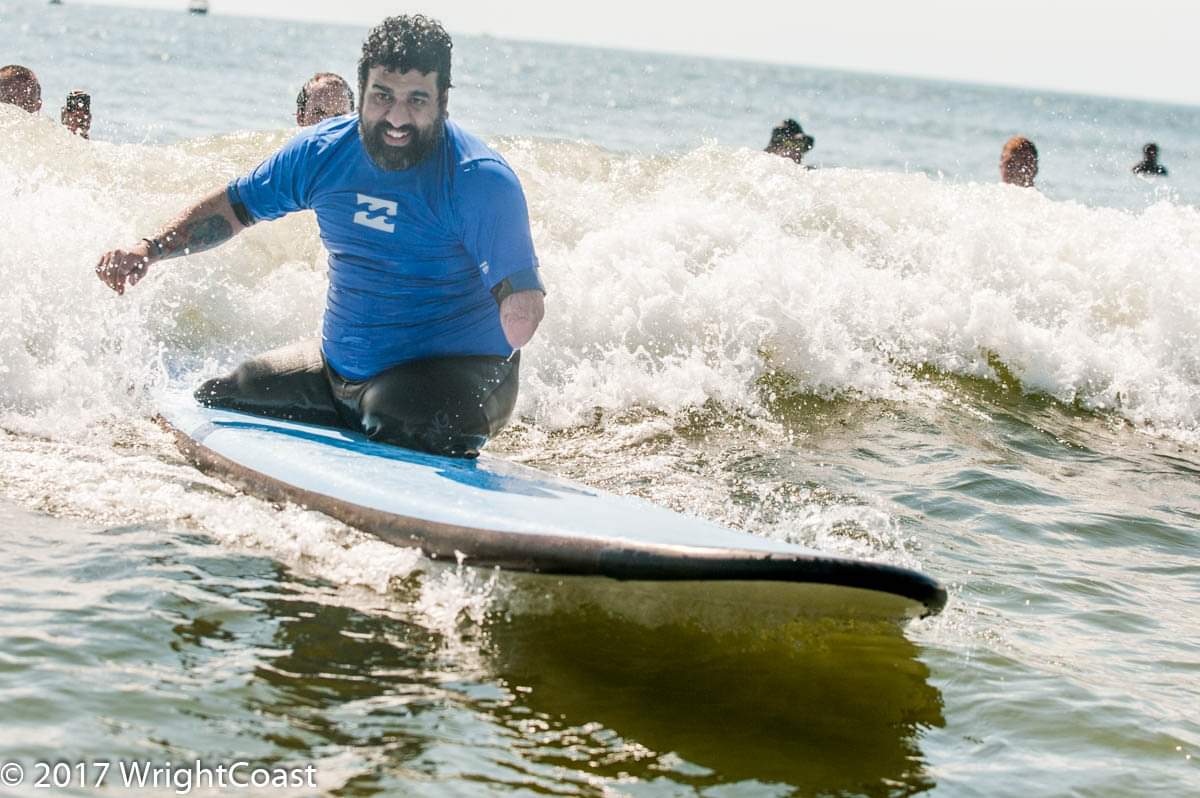We caught up with the brilliant and insightful Luis Rosa-Valentin a few weeks ago and have shared our conversation below.
Luis, looking forward to hearing all of your stories today. When did you first know you wanted to pursue a creative/artistic path professionally?
Growing up I had absolutely no idea my life would take a turn for the artistic. When I was a kid the only thing I wanted to be was a GI Joe. So, It came as no surprise when I joined the Army immediately after graduating high school. The only inkling that I may be a creative came from my freshmen English teacher. She had liked a poem I wrote so much that she said:
“I can see it now. Future Luis, in a rocking chair on his porch, writing poetry.” To which I snapped back “no way, I’m a soldier, not a hippie.” Oh how the turns table.
Fast forward ten years post injury, I’m sitting at the dinner table drawing. I had just finished something for my parents. A drawing of their dog who had recently passed away when, as I was studying it and being pleased with my second attempt, I said to my wife:
“Man, I could do this for a living.” Then, like some cartoon, I get this sudden lightbulb moment and I physically shout “Oh my God, I could do this for a living!” It wasn’t a gradual thing for me. One day it’s a doodle, and the next it’s art. I guess it’s all about intention.


Luis, love having you share your insights with us. Before we ask you more questions, maybe you can take a moment to introduce yourself to our readers who might have missed our earlier conversations?
Well, I’m 41 years old, I have five children and I currently live in Miami. I have only been an artist for two years now. Or, more accurately, I graduated from the Maryland Institute College of Art (MICA) two years ago and could no longer call myself an “art student,” so I guess I’m an artist. Interestingly, I had never painted in my life before my freshman year in community college (shoutout CCBC).
Before I painted, I was in the Army.
I joined in 2001, straight out of high school. I couldn’t get out of that place fast enough. I had always dreamt of being a soldier. Now that I was free to do so and follow my dream, fate would add its own spice. On my first day of basic training the whole world seemed to be falling down around us; September 11th, 2001. You can see the looks of terror in those eighteen year old’s eyes who had signed up just for the college money. Add to that their sudden realization that they were, in fact, infantry. For those that don’t know, infantry are the front line fighters of conventional wars. But we prefer to call ourselves “grunts.” I wasn’t worried, like the college money guys. Fighting an enemy that murdered civilians on our own soil is exactly what I signed up for. The fact that it waited for me to start basic training was just serendipitous.
It was on this grunt’s second deployment to Iraq where I suffered catastrophic injuries from a roadside bomb. To make matters worse, I was on foot and didn’t benefit from a vehicle’s armor, which this particular IED had been purpose built to destroy. I ended up having to be resuscitated twice during the whole ordeal. I lost so much blood that the hospital ran out and had to institute their “walking blood bank” protocol. That’s when a hospital wide alert goes out for anyone with my blood type to drop everything and report to donate immediately. Against all odds, I didn’t die (28 units of blood in one day). The problem was they were pretty sure that wouldn’t last long. So, now that I was stable enough to fly, they sent me back to the states so that I could at least die surrounded by family on American soil. However, I had different plans.
After three weeks in a coma, countless surgeries, and near fatal infections I wake to find that I lost both legs, my left arm, all my hearing (you know those cute videos where “baby hears mom for first time?” Those are cochlear implants, I have two) most of the sight in my left eye and a traumatic brain injury. The first few years of my recovery were, to put it mildly, stressful. On top of this new reality, I was locked in a contentious divorce and custody battle. Those were very dark days. Fortunately I sought help before the dark won. I found myself as a psych in-patient on three separate occasions. It was on that third hospitalization that I was really first acquainted with art. Due to a bed shortage I was transferred to a civilian center that had a separate PTSD ward. Except that when I got there, the doctor of the PTSD ward initially denied me entry and I had to spend the first night with general population. Turns out, the PTSD ward has only ever seen women who have been victims, for the most part, of men. No one knew if a male presence would hamper any progress these ladies have or will achieve. Next morning they decided it should be fine and let me in. While the military hospital had art therapy, it was in this civilian facility where I could really explore art therapy deeper. I honestly think the fact that the ward catered to women is the reason they took art therapy so seriously. It was the most healing approach to my trauma I had experienced.
The positive change I received from art therapy was so much, that I felt I needed to help future warriors in the same way. In fact, it’s the reason I began college, to be an art therapist, not an artist. It wasn’t until my senior year that I decided to pursue art exclusively. I felt I had more to offer as an artist than a therapist. Using the platform that art offers I hope to give a voice to the grunt. We have absolutely no say in whether or not to fight a war, you know. Can you wrap your head around that one? The person that has to go physically fight the war gets no say on whether or not we should even fight the war. There’s got to be a reality out there somewhere where the soldiers in the field, the ones dying, all just said “ef it. You want it? You go get it.”


Is there mission driving your creative journey?
Initially my creative journey was not necessarily to be creative. I was using art as a way to heal from the war. In essence, what the viewer gets is a continuation of my art therapy. I may no longer be exploring unknown feelings and trauma anymore but during the process I learned that I best express myself through image. I’ve tried writing down my story as words on a page but my TBI makes that a little difficult. Images I can get down no problem. Over time I will slowly tell my story via images and hopefully be able to reach others who may be struggling with thoughts and images that they are holding on to. I don’t exactly have a single goal, however. My main thing is if I can identify an area in which my experience can help, I will. My current work explores different aspects of what I’ve experienced in war. Which is exactly what I do with my painting “Self Portrait in Uniform” recently acquired by the Smithsonian Museum of the American Latino.


What do you find most rewarding about being a creative?
NO ONE CAN TELL ME WHAT TO DO! Just kidding, I’m married with four daughters. When I was Sergeant Rosa a normal day meant waking up at around 4:30 every morning to train to be a world devouring beast. Sure I actually enjoyed being out there with my friends. I definitely enjoyed being physically fit and shooting the worlds funnest booms. But being an artist definitely has it’s perks. For example, let me walk you through the typical day of artist Rosa: I wake up whenever I want, usually in time for Let’s Make a Deal, and make myself some coffee. I then go outside (where its eighty degrees in March), play with my dogs, do a little gardening and make some art. Then, my daughters come home from school. We play, do homework, eat dinner and later that night read them their bed time stories. True sustainable peace.
Contact Info:
- Website: https://singlehandedarts.com
- Instagram: sgtluis.rosa
- Facebook: Luis Rosa




